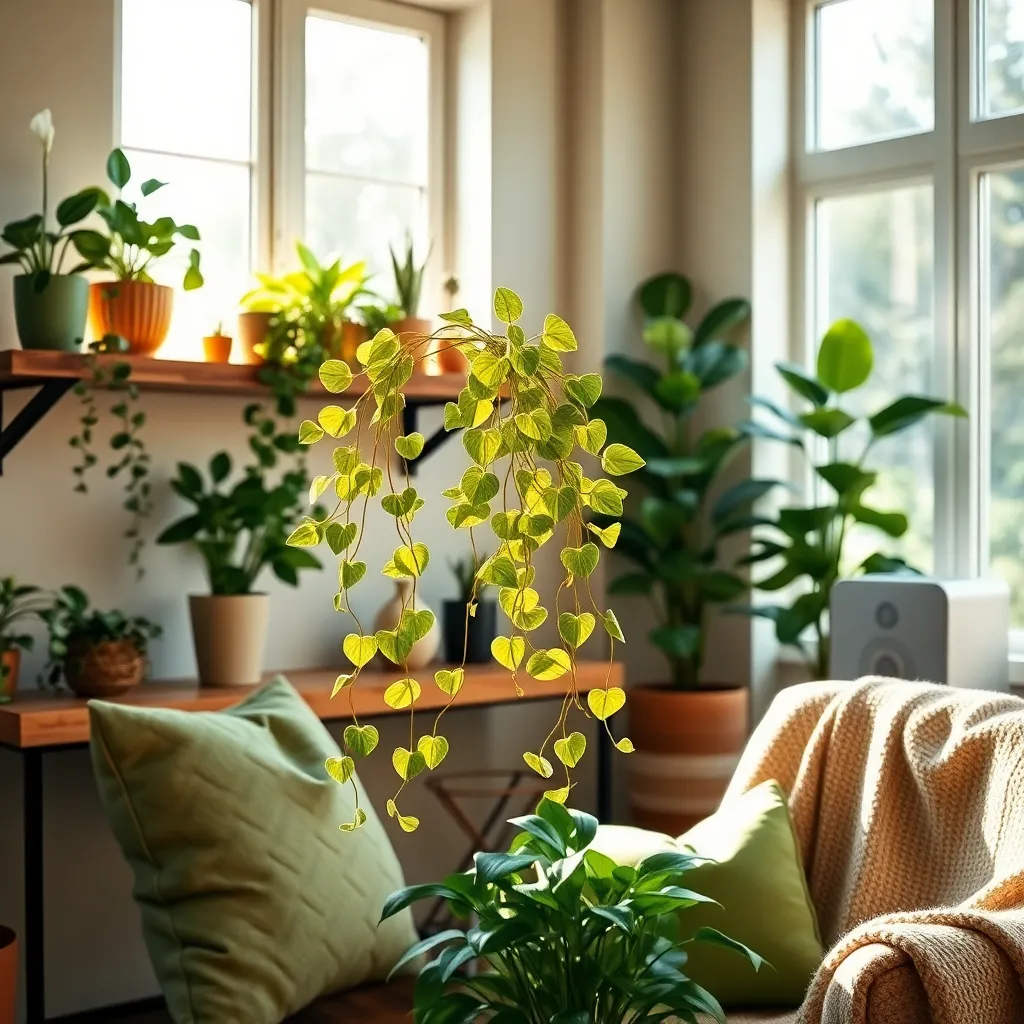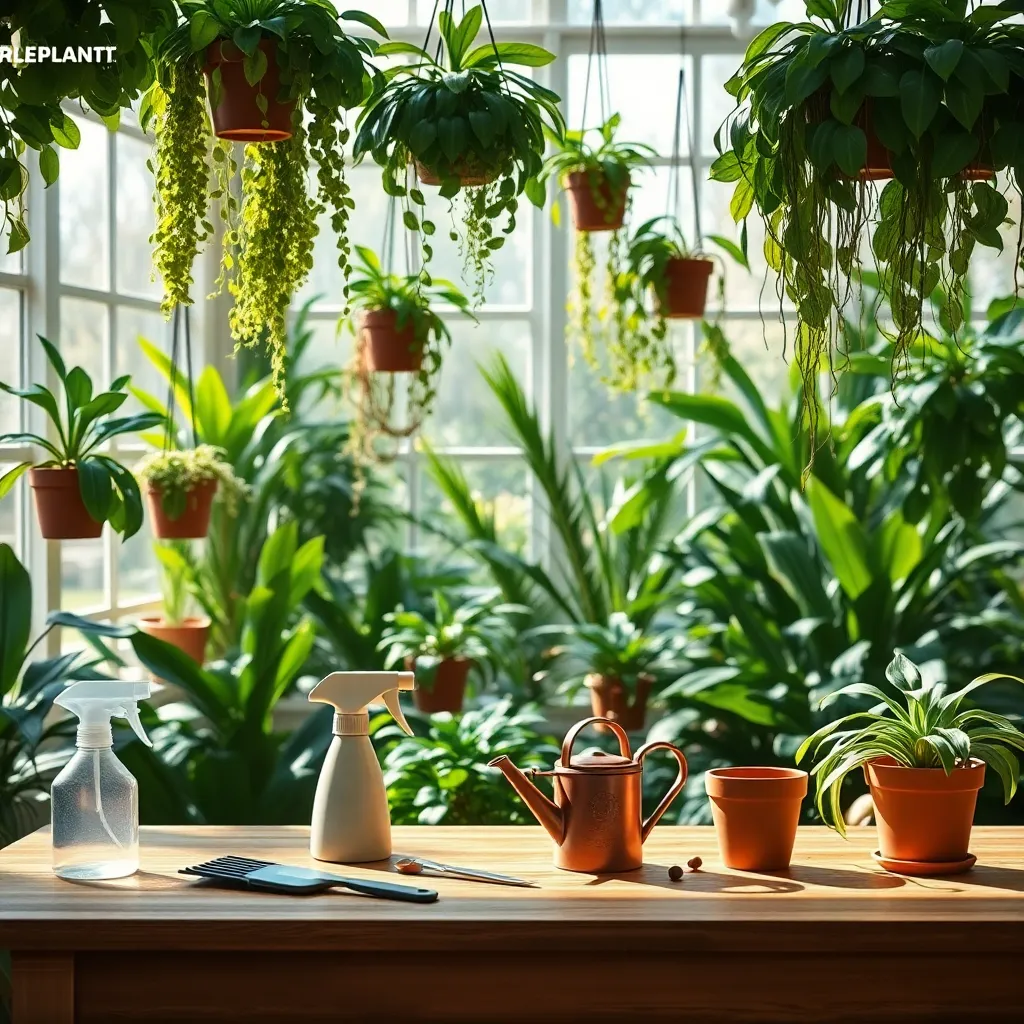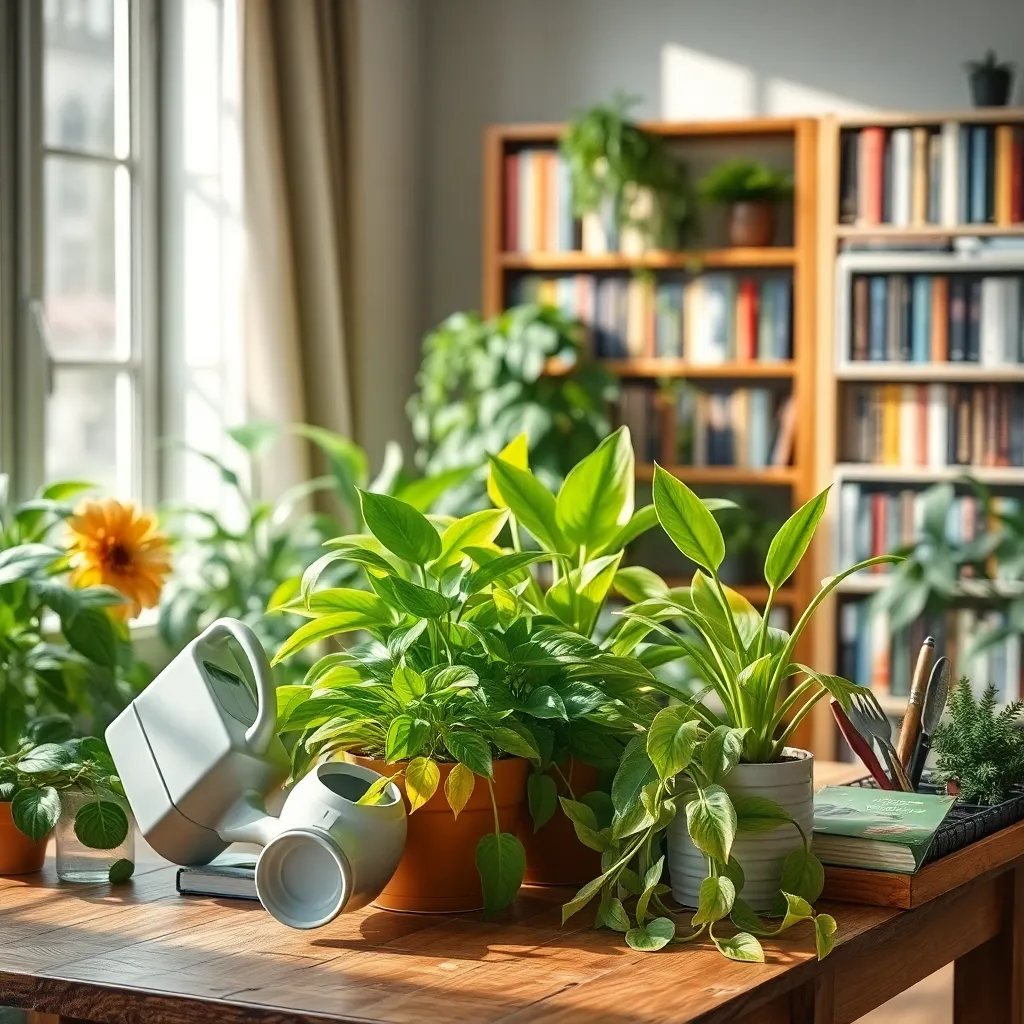Imagine stepping into your home and being greeted by the fresh, invigorating scent of purified air, all thanks to a few thoughtfully chosen indoor plants. For both the green-thumbed veteran and the budding plant enthusiast, cultivating an indoor garden that cleanses the air can be a rewarding and surprisingly simple endeavor. These natural air purifiers not only enhance the aesthetic appeal of your living space but also contribute to your well-being by removing toxins and improving air quality.
In this article, we will explore a selection of indoor plants renowned for their air-purifying qualities, offering practical insights into their care and maintenance. Whether you’re looking to transform your home into a verdant sanctuary or seeking specific plants that combat pollutants, you’ll find expert advice tailored to your gardening journey. From the hardy Spider Plant to the elegant Peace Lily, these plants are more than just decorative; they are your green allies in creating a healthier, more vibrant living environment.
You’ll discover how to match the right plant to your lifestyle and space, ensuring each one thrives under your care. We’ll guide you through the nuances of light, water, and humidity preferences, empowering you to cultivate a flourishing indoor garden with confidence. No matter your experience level, this guide will equip you with the knowledge to transform your home into a haven of clean, fresh air.
Top Air-Purifying Plant Choices

When considering air-purifying plants, the Spider Plant is an excellent choice for beginners. It’s known for its ability to thrive in indirect sunlight and requires only weekly watering to keep its soil slightly moist.
Another fantastic option is the Peace Lily, which not only purifies the air but is also easy to care for. This plant prefers low light conditions and needs watering once the top inch of soil feels dry.
The Snake Plant, also known as mother-in-law’s tongue, is perfect for those who might forget to water their plants regularly. It can tolerate low light, and you should water it sparingly, every two to three weeks, allowing the soil to dry out between waterings.
For a more advanced choice, consider the Boston Fern, which is highly effective at cleaning the air. This plant thrives in a humid environment with indirect light, and you should keep its soil consistently moist, misting it regularly to boost humidity.
Benefits of Indoor Air Purifiers

Adding indoor air purifiers to your home can enhance the air-cleaning benefits already provided by your plants. While plants naturally filter certain toxins from the air, air purifiers can tackle a broader range of pollutants, including allergens and pathogens. This combination ensures a healthier indoor environment, especially when your plants need time to grow and fully develop their purifying capabilities. An air purifier can act as a supplemental tool, allowing your plants to thrive without the burden of purifying large spaces on their own.
Indoor air purifiers come in various types, such as HEPA filters and activated carbon filters, each offering different benefits. HEPA filters are excellent for trapping airborne particles, while activated carbon filters effectively remove odors and volatile organic compounds. These purifiers can be particularly beneficial in homes with limited ventilation or in areas with high pollution levels. By choosing the right type of purifier, you can enhance the air quality more effectively alongside your plants.
To maximize the benefits of air purifiers with your plants, consider strategically placing them in rooms where your plants are located. This placement ensures that the purifier complements the natural air purification process provided by your plants, creating a more efficient system. When choosing purifiers, look for those with adjustable fan speeds and timers, allowing you to customize their operation according to your needs. By integrating both plants and purifiers, you create a balanced ecosystem that promotes better health and well-being.
Regular maintenance of your air purifiers is essential to ensure they continue to function effectively. Make sure to clean or replace filters according to the manufacturer’s instructions to prevent the buildup of dust and allergens. This practice not only prolongs the life of the purifier but also maintains its efficiency in purifying the air. With proper care, your air purifiers will work in harmony with your indoor plants, providing you with a cleaner, fresher home environment.
Care Tips for Optimal Growth

To ensure your indoor plants thrive and purify the air effectively, it’s essential to understand their specific needs. Start by placing plants like the snake plant and peace lily in areas with indirect sunlight, as too much direct light can damage their leaves.
Watering is another critical aspect of indoor plant care. Typically, you should water these plants when the top inch of soil feels dry, ensuring you use a pot with good drainage to prevent root rot.
For optimal growth, regular feeding with a balanced, water-soluble fertilizer every month during the growing season is recommended. This ensures that plants receive the necessary nutrients to maintain their air-purifying capabilities and overall health.
Humidity is also vital for many indoor plants, especially tropical varieties like the Boston fern. Consider using a humidifier or placing plants on a tray filled with water and pebbles to maintain adequate humidity levels.
Advanced gardeners might experiment with soil amendments to enhance plant growth. For instance, adding perlite or vermiculite can improve soil aeration and drainage, which is particularly beneficial for succulents and other drought-tolerant plants.
Finally, regularly dusting the leaves of your indoor plants helps them absorb more light and perform photosynthesis efficiently. Use a damp cloth to gently wipe leaves clean, ensuring the plant’s pores remain unclogged for optimal air purification.
Placement for Maximum Purification

To maximize air purification, position your plants strategically throughout your home. Place larger plants like the Snake Plant or Peace Lily in common areas such as the living room or office, where they can capture more airborne toxins.
For smaller spaces, consider placing plants like the Spider Plant on shelves or hanging them near windows. These plants thrive in bright, indirect light and can help purify air in bathrooms or kitchens.
It’s crucial to avoid overcrowding plants, which can reduce their ability to filter air effectively. Ensure each plant has enough space to breathe and grow by maintaining a distance of at least a foot between pots.
For advanced gardeners, consider rotating plants between rooms every few weeks. This technique ensures that plants remain healthy and effective, as they are exposed to varying light levels and environmental conditions.
Common Mistakes to Avoid

One common mistake is overwatering your indoor air-purifying plants, which can lead to root rot. Ensure the top inch of the soil is dry before watering again, and use pots with drainage holes to prevent waterlogging.
Another error is choosing the wrong soil type for your plants, which can hinder their ability to purify air. Use a well-draining potting mix, ideally one that contains materials like perlite or vermiculite to promote aeration.
Many gardeners inadvertently place their plants in areas with insufficient light, affecting their health and air-purifying ability. Research the specific light needs of your plants; for instance, a peace lily thrives in low light, while a rubber plant prefers bright, indirect sunlight.
Neglecting to clean your plant’s leaves is a mistake that can reduce their effectiveness in purifying air. Gently wipe leaves with a damp cloth every few weeks to remove dust and allow the plants to breathe efficiently.
Conclusion: Growing Success with These Plants
In exploring the world of indoor plants that purify air, we’ve uncovered five key relationship concepts: the nurturing bond plants foster between partners, the calming atmosphere they create, the shared responsibility in caring for them, the opportunity they provide for meaningful conversations, and how they symbolize growth and resilience. These elements collectively enhance the emotional connection and harmony within your home.
As an actionable next step, consider selecting a plant together with your loved one and make a ritual of caring for it. This simple yet profound act can strengthen your relationship by encouraging teamwork and communication.
Don’t let this valuable information slip away—bookmark this article to revisit these insights whenever you need a reminder of the power of nurturing both your plants and your relationship.
Remember, just like a healthy plant, a thriving relationship requires attention, care, and love. By integrating these concepts into your life, you’re paving the way for a more fulfilling and successful partnership. So take action today, and watch both your plants and your relationship flourish.

